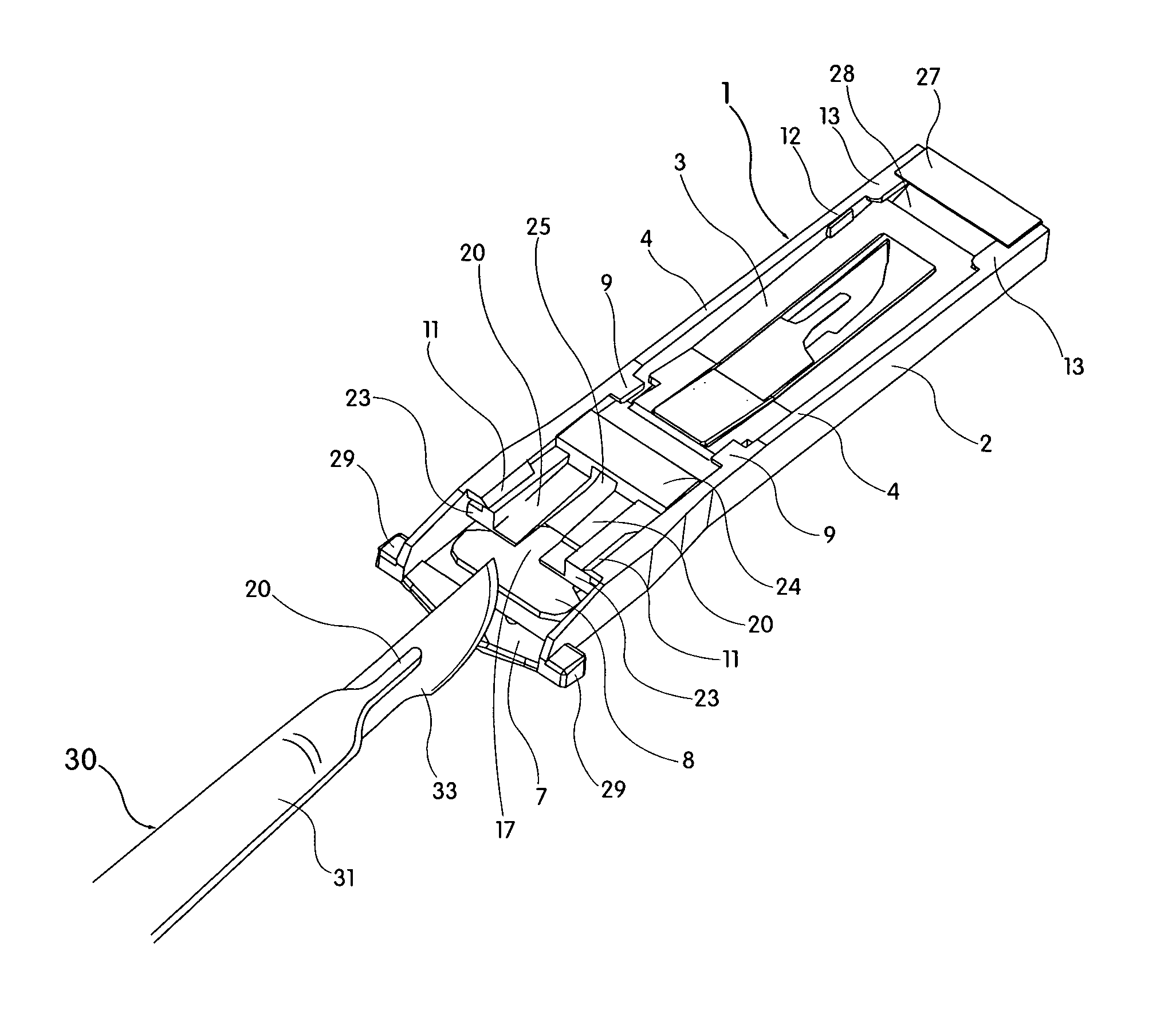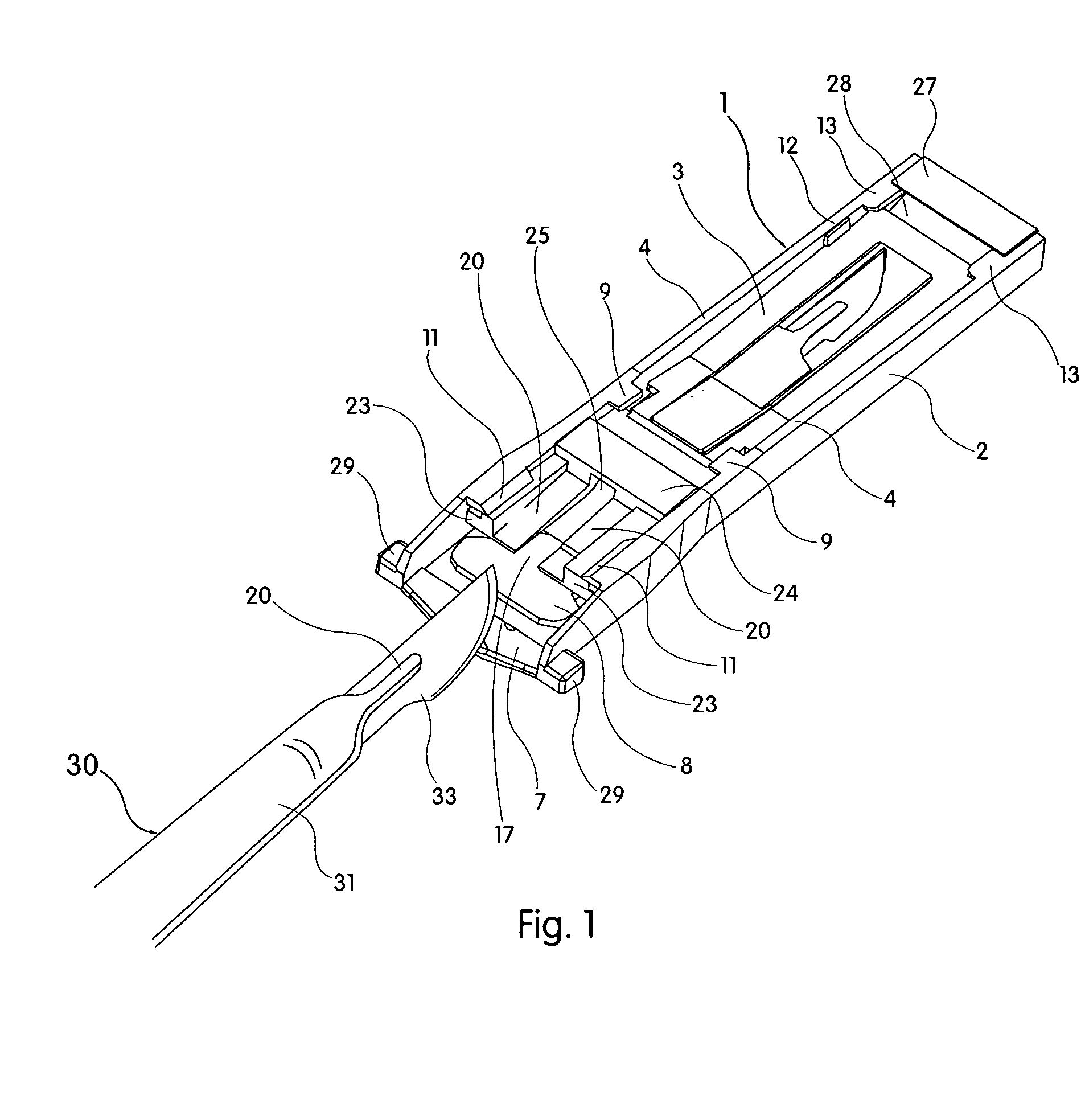Scalpel blade remover
a blade and blade technology, applied in the field of blade removers, can solve the problems of inconvenient use, inconvenient use, and operator injury, and achieve the effect of preventing subsequent use and ensuring the number of blades
- Summary
- Abstract
- Description
- Claims
- Application Information
AI Technical Summary
Benefits of technology
Problems solved by technology
Method used
Image
Examples
Embodiment Construction
[0061]FIG. 1 shows a scalpel blade remover 1 comprising two main parts, namely a housing 2 and an actuator 3. In use, the actuator 3 is disposed within the housing 2. The scalpel blade remover 1 will be described with reference to its horizontal orientation as shown in the drawings. However, the blade remover can be used vertically or in any other suitable orientation, and the interpretation of the terms such as “upper”, “lower”, “above” and “below” as used herein is to be varied accordingly.
[0062] The housing 2 has two opposed sidewalls 4, an end wall 5 at one end (hereafter referred to as the “distal end”), a base 6 spanning between the side walls for part of their length from the end wall, and a bridge or brace 7 which is co-planar with the base and extends between the sidewalls 4 at the other end (hereafter referred to as the “proximal end”). The base 6 has a cantilevered portion which extends towards the brace 7 and forms a leaf spring 8.
[0063] Inwardly extending retaining lu...
PUM
| Property | Measurement | Unit |
|---|---|---|
| Force | aaaaa | aaaaa |
| Flexibility | aaaaa | aaaaa |
Abstract
Description
Claims
Application Information
 Login to View More
Login to View More - R&D
- Intellectual Property
- Life Sciences
- Materials
- Tech Scout
- Unparalleled Data Quality
- Higher Quality Content
- 60% Fewer Hallucinations
Browse by: Latest US Patents, China's latest patents, Technical Efficacy Thesaurus, Application Domain, Technology Topic, Popular Technical Reports.
© 2025 PatSnap. All rights reserved.Legal|Privacy policy|Modern Slavery Act Transparency Statement|Sitemap|About US| Contact US: help@patsnap.com



